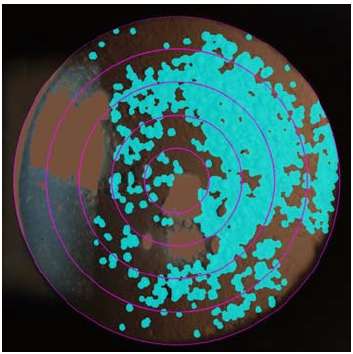Researchers develop high-precision software for diagnosing eye sensitivity

Researchers at the University of Alicante have developed high-precision software for diagnosing eye sensitivity. This is a new technology that allows quantification of the degree of opacity in the posterior capsule of the eye caused by the growth of cells in the intraocular lens.
The opacity of the posterior capsule is currently the most important aspect of cataract surgery in modern times, and is the postoperative complication that can still occur months or years after cataract surgery. This is reported to occur between 20% and up to 50% of patients in the period of five years after surgery, and is associated with the decreased of visual acuity, impaired contrast sensitivity and glare problems that involve significant social, medical and economic impact.
According to Dr. Daniel Ruiz Fernández, main researcher and member of the research group in Bioinspired Engineering and Computer Science for Health (IBIS), the problem of quantification of posterior capsule opacity has been addressed in different works and business solutions using different computational techniques. However, these processes entail some drawbacks because they require interaction with experts for them to detect the zones of opacification, with the risk of losing objectivity in the quantification. On the other hand, some of the systems are automated but focused on detecting the lens opacity (cataract origin) and not specifically on the growth of cells in intraocular lens.
The technology developed by the researchers at the UA provides a fully automatic and objective quantification from a digital image of the magnification of the ocular fundus. The process does not require any intervention by specialists, becoming an important tool for diagnosis. Thus, the use of this technology can avoid unnecessary interventions as well as improving diagnostic in those necessary.
This is a high-precision process since it directly analyses the origin of the opacity in the intraocular lens, ie, cells that grow on the lens.
The IBIS group has developed the first prototype of the implementation that has been tested successfully. The group also continues to work on continuous improvement and optimisation of the software for better detection of artifacts and cells as well as in reducing the processing time.


















